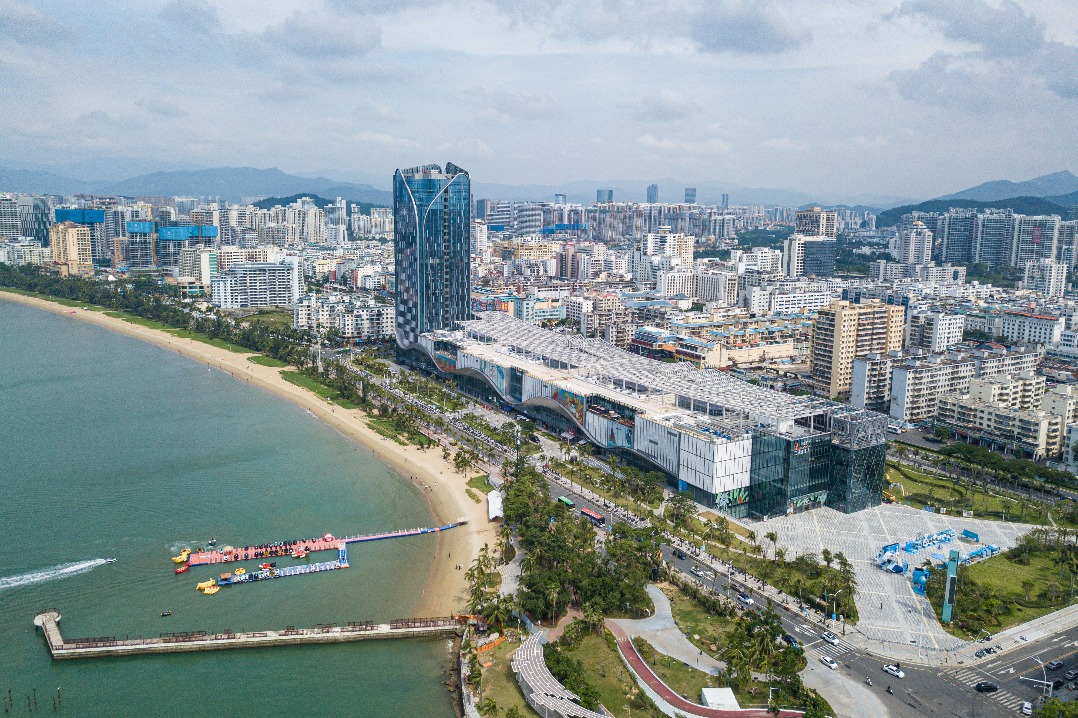Lantau blueprint balances development, conservation

The government unveiled the Sustainable Lantau Blueprint last Saturday, which maps out the overall development plan for Lantau Island. The Development Bureau said the blueprint was formulated under the principle of "development in the north, conservation for the south". In other words, the North Lantau and future East Lantau Metropolis will focus on housing and economic development, while the South and Northeast Lantau are set for development into a leisure, entertainment and tourism node.
It is surprising that this blueprint did not receive much press coverage despite being a plan that will have great impact on Hong Kong's development in the next few decades. Some may still consider Lantau Island a remote area where the airport is located but it is in fact the largest island of the territory with both new towns and country parks. It has huge potential for residential and commercial development as well as conservation and tourism. With the completion of the Hong Kong-Zhuhai-Macao Bridge (HZMB) later this year and the future Tuen Mun-Chek Lap Kok Link, it has a strategic geographic location as not only a gateway to the world via the Hong Kong International Airport but also to the Greater Pearl River Delta region. Shenzhen, Macao and Zhuhai are all within its one-hour intercity traffic circle. Therefore, it is best positioned to benefit from the Guangdong-Hong Kong-Macao Greater Bay Area development.

Hong Kong International Airport's three-runway system will help enhance the city's competitiveness as a leading aviation hub in the region; the government estimates it will provide about 123,000 direct jobs and 165,000 indirect jobs. Topside development at the Hong Kong Boundary Crossing Facilities Island that houses the border check point of the HZMB can provide about half a million square meters of commercial floor space. Initially it was suggested this commercial space could house a large retail outlet mall catering to mainland shoppers and helping lessen the pressure on over-crowded in-town shopping areas like Tsim Sha Tsui and Causeway Bay. As the growth of tourism has slowed down somewhat the use of this commercial space is now undecided. It may eventually be designated for retail and commercial use, providing more employment opportunities.
There are now two central business districts in Hong Kong - one in Central and the other in East Kowloon. The East Kowloon business area is still expanding but is already facing severe traffic jams and other constraints. It will not be long before we need a third CBD. That is why the setup of East Lantau Metropolis was proposed. It is the most eye-catching part of the Sustainable Lantau Blueprint since the project would provide about 1,000 hectares of land for development, accommodate 400,000 to 700,000 residents and create about 200,000 jobs. The plan is very ambitious because it requires massive land reclamation to create large man-made islands that would no doubt house many skyscrapers. Such an undertaking has never been tried before and we only have experience on building new towns on reclaimed land extending from the mainland. Apart from technical difficulties, it begs the question of whether it is cost-effective to spend billions of dollars on these artificial islands. After all, in addition to land reclamation, there need to be highway and railway tunnels linking the new islands to Lantau and Hong Kong Island, which are surely very expensive to build. Moreover, the plan will likely be challenged by the opposition camp and environmental groups, judicial reviews and protests are expected all the way from the zoning and planning stage to the construction stage. Based on past experience, it will take decades - not years - before any households and businesses could move into the East Lantau Metropolis. It is true that Hong Kong has a shortage of developable land but it is still possible to find large areas for development - for example we can develop brownfield sites in Yuen Long, the boundary restricted area in the North District and we can even reclaim land off Northeast Lantau near the Disneyland. There are surely other options for development that are quicker and less costly.
Another eye-catching part of the blueprint is to drastically increase the population of Lantau Island from the current 110,000 to almost 1 million. Most of the population growth will be on the new artificial islands but the number of people living in the northern part of Lantau, such as Tung Chung and Siu Ho Wan, will rise two- or three-fold. With anticipated increased road traffic from the HZMB and the Tuen Mun-Chek Lap Kok Link, the Tsing Ma Bridge may not be able to cope for much longer. The blueprint proposes two new railway stations will be built to serve the added population but the Tsing Ma Bridge is a choke-point where trains of both the Tung Chung Line and the Airport Express have to pass through. The city planners have to be very careful in calculating the impact of population growth on traffic capacity.
Overall, I believe the Sustainable Lantau Blueprint has balanced needs for development and conservation. The strategic location of Lantau Island is too good to be ignored while there are many ecologically significant sites that need to be preserved. I sincerely hope the hard work of the officials involved is appreciated and seriously considered by the community, and is not undermined by political squabbles.
(HK Edition 06/09/2017 page6)
Today's Top News
- US arms sales to Taiwan a dangerous gambit: Editorial flash
- Taiwan opposition lawmakers announce plan to impeach Lai Ching-te
- Boosting consumption will be key in 2026
- No one should remain silent accomplice of racism
- Hainan FTP opens fast lane
- Visa-free measures spur surge in visitors






























